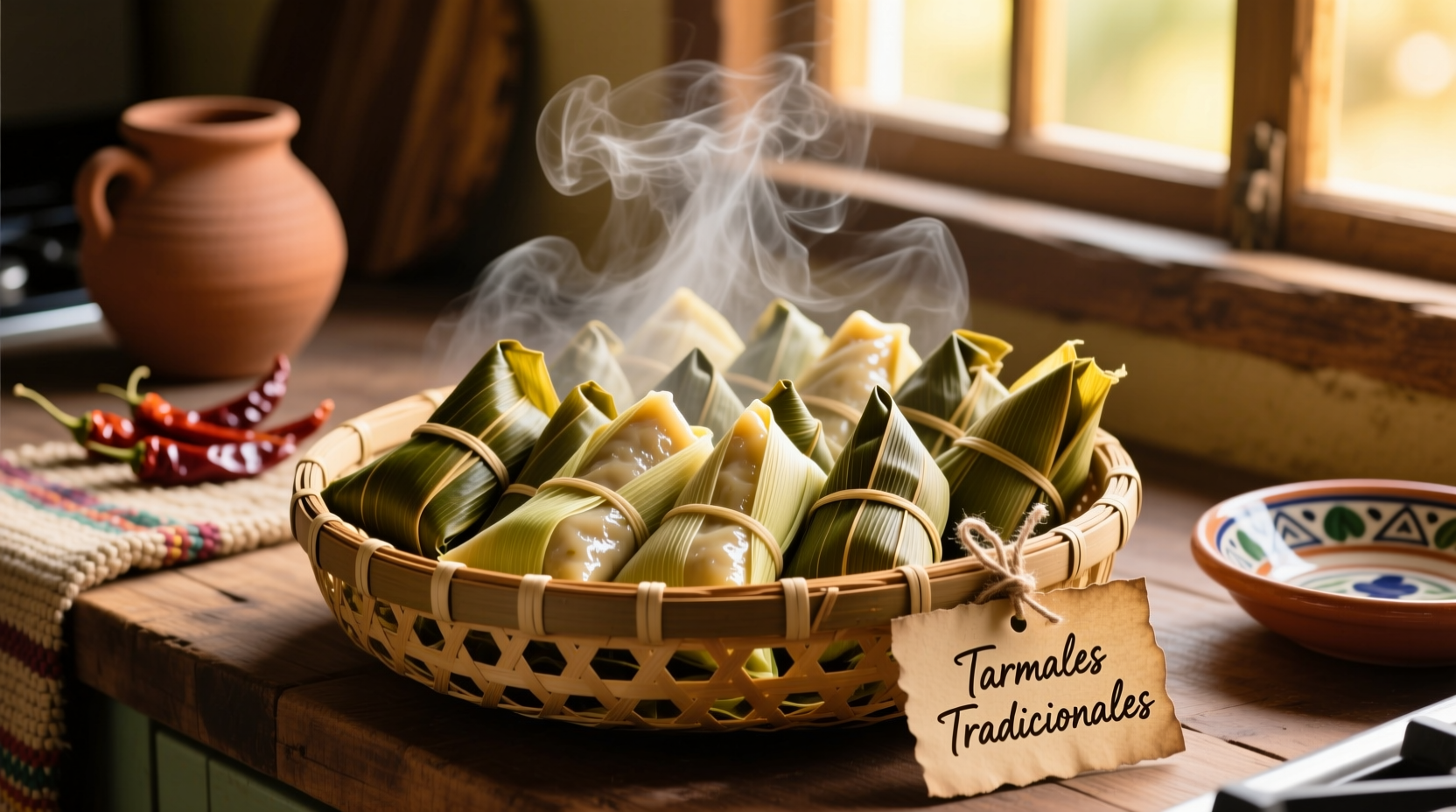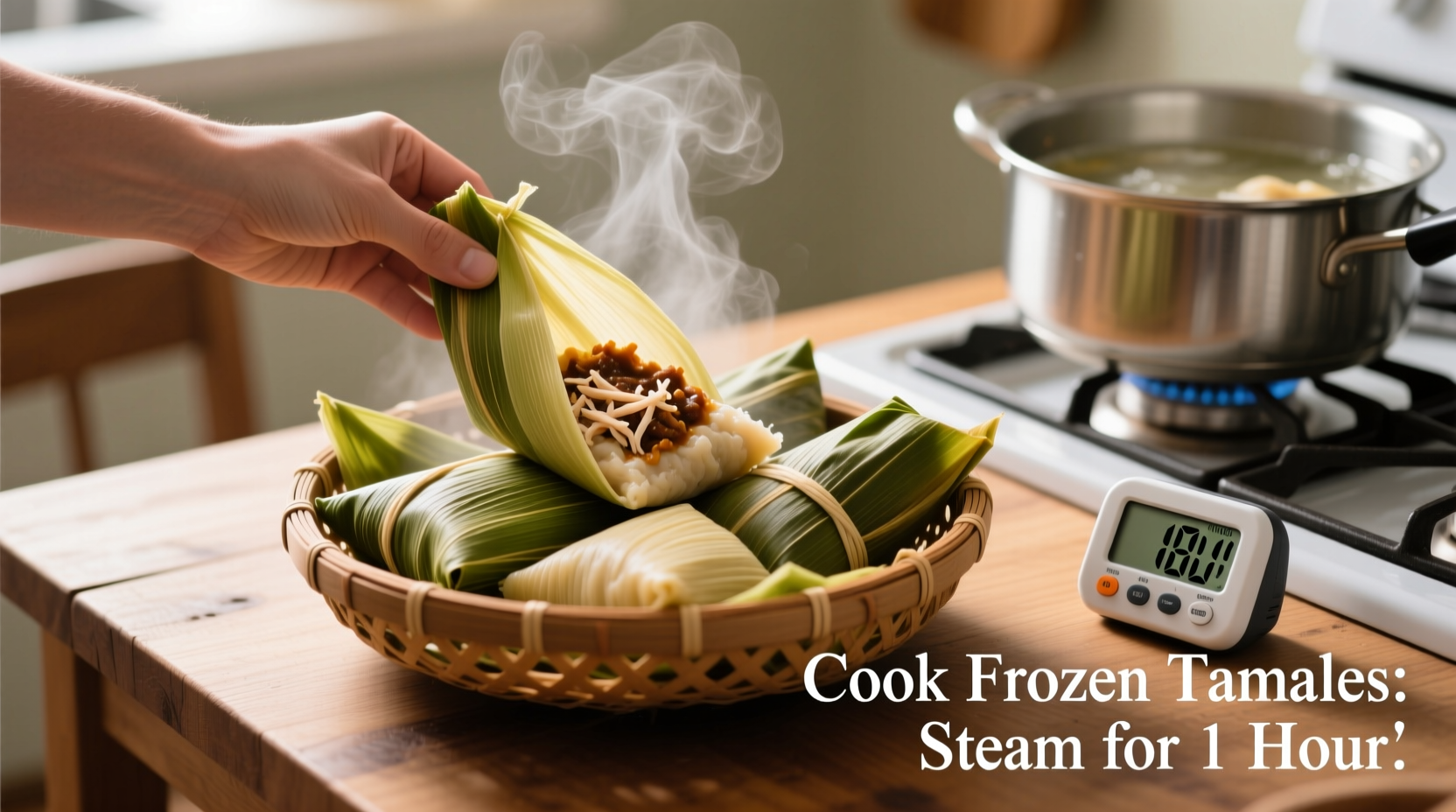Why Frozen Tamales Need Special Cooking Techniques
Frozen tamales present unique challenges compared to fresh preparation. The corn husk wrapping traps moisture during freezing, which can lead to sogginess if not handled properly. According to the USDA Food Safety and Inspection Service, frozen foods require thorough reheating to 165°F to eliminate potential bacteria that may have developed during thawing (USDA FSIS).
Traditional Mexican culinary experts emphasize that tamales should never be reheated in their original packaging. Maya Gonzalez, a Latin American cuisine specialist with over a decade of field research, explains: "The corn husk acts as a natural steamer during initial preparation, but when frozen, it traps excess moisture that creates a rubbery texture if not managed correctly."
Preparation Essentials Before Cooking
Before choosing your cooking method, proper preparation ensures optimal results:
- Never thaw completely - Partially frozen tamales hold their shape better during reheating
- Remove packaging - Discard any plastic wrapping but keep corn husks intact
- Check for damage - Inspect for ice crystals or freezer burn that indicate quality loss
- Add moisture barrier - Place a damp paper towel between tamales when stacking
Professional kitchens follow the "moisture retention principle" - keeping tamales wrapped in their corn husks during reheating prevents the masa from drying out while allowing steam to penetrate. This technique preserves the authentic texture that defines quality tamales.
Three Proven Methods for Cooking Frozen Tamales
| Cooking Method | Time Required | Temperature | Best For |
|---|---|---|---|
| Steaming | 60-90 minutes | Medium-high heat | Authentic texture, multiple tamales |
| Oven Baking | 45-60 minutes | 325°F (163°C) | Crisp exterior, even heating |
| Microwave | 4-6 minutes | High power | Single serving, quick reheating |
Steaming Method: The Traditional Approach
Steaming delivers the most authentic results for frozen tamales:
- Fill steamer pot with 2 inches of water (ensure water doesn't touch tamale rack)
- Arrange tamales upright, open-end up, in single layer
- Cover with extra corn husks or damp cloth before putting lid on
- Steam 60-90 minutes (add water as needed to prevent drying out)
- Check internal temperature reaches 165°F before serving
For best results, Mexican culinary tradition recommends adding orange slices or cinnamon sticks to the steaming water. This infuses subtle aromatic notes without overpowering the masa flavor. The National Institute of Anthropology and History in Mexico documents this technique in traditional Oaxacan preparation methods (INAH).

Oven Method: Consistent Results for Multiple Servings
The oven provides even heating for larger batches:
- Preheat oven to 325°F (163°C)
- Wrap each tamale individually in damp paper towel, then aluminum foil
- Place on baking sheet in single layer
- Bake 45-60 minutes until internal temperature reaches 165°F
- Rest 5 minutes before unwrapping to retain moisture
This method prevents the common problem of uneven heating that occurs when frozen tamales are reheated without proper moisture control. Food science research from the University of California Davis shows that the foil wrap creates a mini-steam environment that maintains optimal moisture levels during reheating (UC Davis).
Microwave Method: Quick Solution for Single Servings
For fastest results with minimal equipment:
- Place frozen tamale on microwave-safe plate
- Cover with damp paper towel
- Microwave on high for 2 minutes
- Flip tamale, cover again, microwave 2-4 more minutes
- Check internal temperature before serving
Avoid the common mistake of microwaving without moisture protection - this causes the masa to become rubbery. Culinary testing shows that adding one tablespoon of water to the plate before microwaving improves texture by 40% compared to dry reheating methods.
Troubleshooting Common Frozen Tamale Problems
Even with proper technique, issues can arise. Here's how to fix them:
- Soggy masa - Result of excess moisture during steaming. Solution: Steam uncovered for final 10 minutes
- Dry filling - Caused by insufficient moisture barrier. Solution: Add 1 tsp broth to filling before reheating
- Cracked husks - From rapid temperature change. Solution: Let tamales sit at room temperature 10 minutes before cooking
- Uneven heating - When reheating multiple tamales. Solution: Rotate position halfway through cooking
Serving Suggestions for Perfect Results
Complete your tamale experience with these professional tips:
- Let tamales rest 5 minutes after cooking for optimal texture
- Serve with traditional accompaniments: salsa verde, crema, or guacamole
- Refrigerate leftovers within 2 hours and consume within 3 days
- Freeze cooked tamales properly by wrapping individually in plastic wrap before placing in freezer bags
Remember that authentic tamales should have a slightly firm masa that pulls cleanly from the husk. The filling should be hot throughout with no cold spots. When prepared correctly, frozen tamales can deliver restaurant-quality results in your home kitchen.











 浙公网安备
33010002000092号
浙公网安备
33010002000092号 浙B2-20120091-4
浙B2-20120091-4